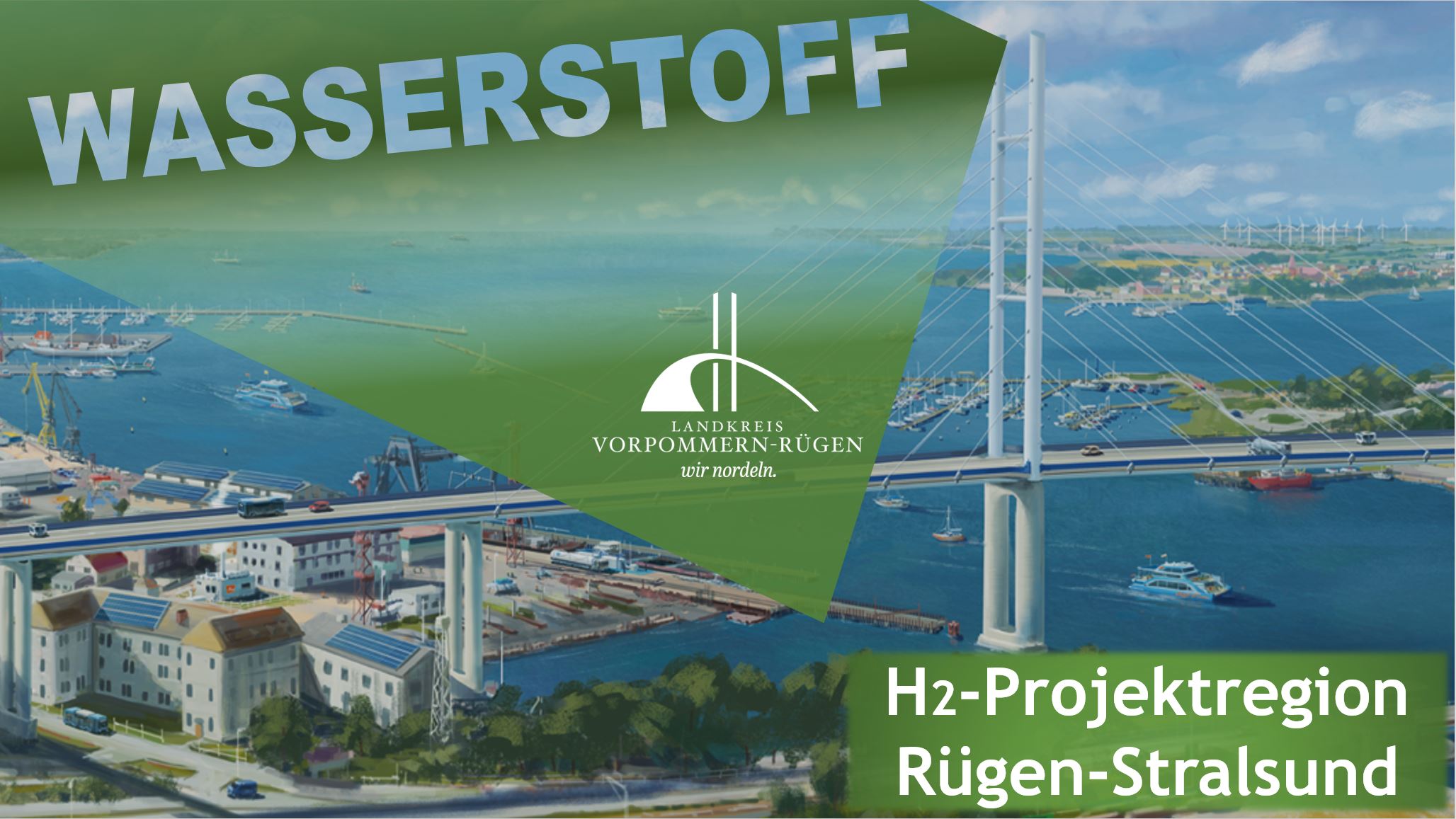HyPerformer II: H2Rügen-Stralsund
Mecklenburg-Western Pomerania
Aim: Establishment of a central hydrogen hub (production, distribution and consumer infrastructure)
Project volume: approx. EUR 25 million (BMDV funding EUR 15 million)
Duration: 06/2023-12/2025

Background to the region
Under leadership of the Hanseatic City of Stralsund, the region successfully completed the HyStarter phase, the first stage of the HyLand funding programme from October 2019 to March 2021 under the name “Rügen-Stralsund”. In May 2022, the Stralsundmunicipality received confirmation to participate in the HyExpert phase, which is the second stage. It was launched in September 2022 with a kick-off meeting in Stralsund’s town hall. Based on the associated feasibility studies, meaningful data on implementation scenarios could be generated and the region developed a clear concept that fits the HyPerformer programme and has the necessary degree of implementation maturity.
The subsequent step entailed participating in the HyPerformer competition in order to receive federal funding of up to €15 million in the final HyLand phase. The district administration of the Vorpommern-Rügen district submitted the entry to the competition and is the coordinating body. On 26 April 2023, Rügen-Stralsund was announced as a winning HyPerformer II region by Parliamentary State Secretary Michael Theurer in Berlin.
Applications in the mobility sector are at the centre of the development of the domestic hydrogen economy. Due to its flexibility, the availability of applications and its proximity to fossil fuels in terms of price, this is where hydrogen has the quickest chance of establishing itself and thus becoming interesting for other sectors in the medium term.
As part of the project, it is planned to equip the district’s own local public transport system with twelve hydrogen buses. In addition, local haulage companies will also become active in the consumption of hydrogen via fuel cell trucks. Besides road transport, locally produced green hydrogen will also be used to supply so-called “crew transfer vessels” at the seaport of Mukran, which can be powered by multi-fuel engines that are capable of burning hydrogen as well as diesel. These ships bring the operating and maintenance crews to the wind turbines located in the Baltic Sea (“offshore wind farms”).
Plans also call for the hydrogen to be produced by Stralsund’s public utility company Stadtwerke Stralsund, which, in addition to the 4 MW electrolyser, will also build the associated power generation facilities (wind and PV) on a regional basis. While the ships will be supplied by trucks, which will transport the hydrogen from Stralsund to Mukran in a special transport container, the public filling station will be built in the immediate vicinity of the electrolyser and connected to it through a pipeline in order to keep both costs and CO2 emissions low. Through the flexibility of the distribution station and the possibility of filling the trailers integrated in the project, the station will be referred to as a so-called hydrogen hub in the future.
As a further benefit, the waste heat from the electrolyser can be fed into Stralsund’s local heating network, thereby contributing to cross-sectoral decarbonisation.
The project is scheduled for completion in the second half of 2025. The total budget amounts to at least 25 million euros.
The HyPerformer regional stakeholders
SWS Stadtwerke Stralsund GmbH, Energiewerk Rügen eG, Hypion GmbH, VVR mbH, FWOL GmbH, Grimmener Spezitrans & Service GmbH, Hochschule Stralsund
Project contact
Dennis Lüdke
Hydrogen Region Coordination Officer

